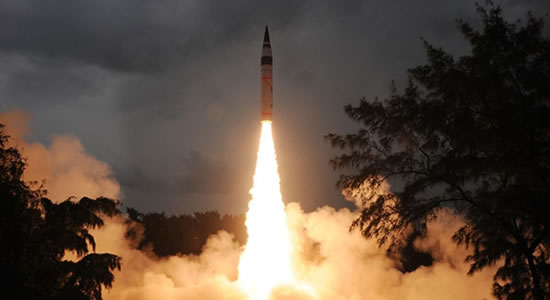India has successfully test-fired its surface-to-surface Agni-V long-range Intercontinental Ballistic Missile, the Indian Defense Ministry said in a tweet Thursday. The nuclear-capable Agni-V is believed to be India’s most advanced ICBM missile. It was fired Thursday morning India time on Abdul Kalam Island off the coast of the eastern state of Odisha.
Agni-5 is the most advanced missile in the Agni series with a strike range of over 5,000 kilometres. Agni-5 was test-fired at about 9:54 am from launch pad number 4 of the Integrated Test Range (ITR) in Abdul Kalam Island, earlier known as Wheeler Island, off Odisha coast. During the test-fire, the sophisticated missile travelled for 19 minutes and covered 4,900 km.
The ministry called the test a “major boost” to the country’s defense capabilities. India is believed to have about 120 to 130 nuclear warheads in its arsenal, according to the Federation of American Scientists.
The missile has been tested five times since 2012, with the most recent test prior to Thursday coming in December 2016. That launch drew the ire of India’s two most important geostrategic adversaries: Pakistan and China.
Relations between Beijing and New Delhi deteriorated significantly in 2017 following a border dispute in the Himalayan region of Doklam.
The launch also comes during one of India’s flagship geopolitical conferences, the Raisina Dialogue 2018. The test took place during a panel titled: “Nuclear Unpredictability: Managing the Global Nuclear Framework.”
Vipin Narang, an associate professor of political science at MIT who nuclear proliferation, called the timing of the launch very interesting.
“This is a long-known maturing capability,” Narang said on Twitter.






















